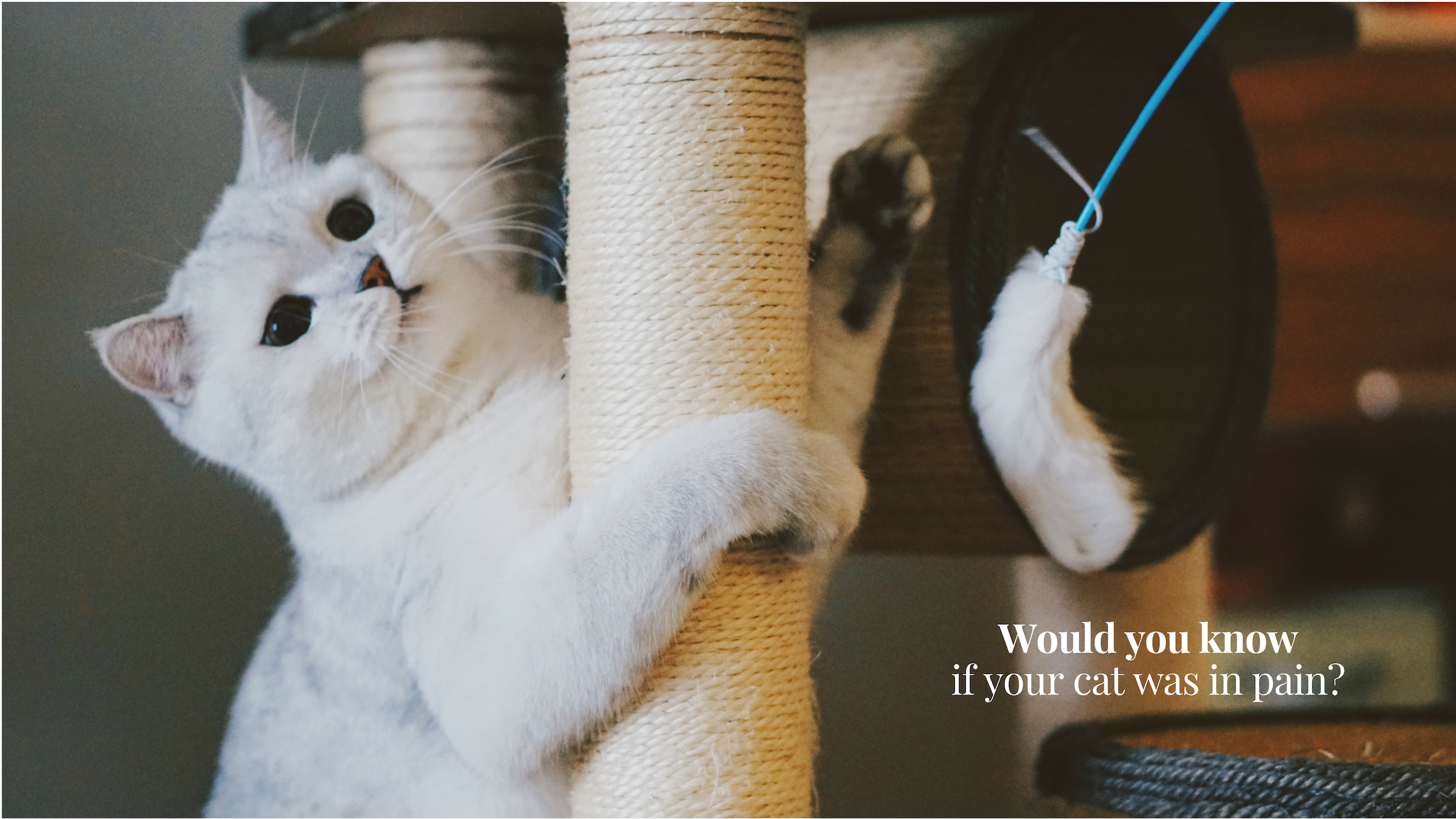Would you know if your cat was in pain? As attentive and loving cat owners, we all want to answer “yes” to that question, but the truth is, felines are masters of disguise—and because of this, they are one of the most common species with undiagnosed pain.
In addition, as owners, we interact with cats on a much different level than we do with dogs or other animals in our homes. For example, cats tend to be sedentary, so a limp may go undetected. Some cats don’t appreciate being picked up, so pain may not be noted when being handled on a routine basis. Thankfully, our team at Riverstone Veterinary Group has a lot of experience in treating felines!
An article published in the Journal of Feline Medicine and Surgery recently reviewed the results of a study that examined different veterinarians’ approaches to identifying and treating chronic pain caused by degenerative joint disease in cats.
The results highlighted three important things for pet owners and practitioners alike to consider when managing feline pain:
Only three therapies available to treat degenerative joint disease pain in cats have undergone rigorous scientific trials—but that doesn’t mean they are the only good options.
While some veterinarians may be hesitant about offering treatments without scientific evidence, the study actually showed the mostly widely prescribed treatment was not one with robust scientific support. Despite a lack of research on this medication in cats, it is generally regarded as appropriate, safe, and effective.

Clinical experience is instrumental in successfully diagnosing and treatment pain in cats.
The article broke down the use of pain medication based on veterinarians’ years in practice, outlining generational differences in how feline pain management is approached. Veterinarians in practice less than one year were the least likely to prescribe medication, while those in practice more than 20 years were most likely to prescribe anti-inflammatory drugs like corticosteroids. Veterinarians with between 6–20 years of experience were open to prescribing therapy of any kind—and therefore, most likely to identify and treat pain appropriately.
Understanding how degenerative joint disease pain develops in cats is key to selecting the best treatment.
It is important to remember that corticosteroids are not the only solution for feline pain management. While these drugs relieve inflammation, they do not address many other important factors in the cat’s pain response. There are also adverse effects to watch for, as corticosteroids can alter glucose metabolism, promote fluid retention, and suppress the immune system.
At Riverstone Veterinary Group, we are committed to understanding pain in cats. We can help you determine if your feline family member is experiencing any discomfort and develop a multimodal approach to manage it effectively. This may include medicine as well as integrative options that promote self-healing.
Regular wellness exams are essential to prevent silent suffering. Contact us or schedule an appointment for your cat today.

